When it comes to consumer DSLRs, Nikon has a reputation for producing high-quality cameras that cater to a wide range of photographers, from beginners to professionals. Two such cameras, the Nikon D3100 and D3300, often spark debate among photography enthusiasts. Both devices deliver exceptional performance, but they each have unique features and specifications that may make one a better fit for specific types of photographers. In this article, we’ll dive into a detailed comparison of the Nikon D3100 and D3300, helping you make an informed decision on which camera is the ideal choice for your photography needs.
Nikon D3100 Overview
Specifications
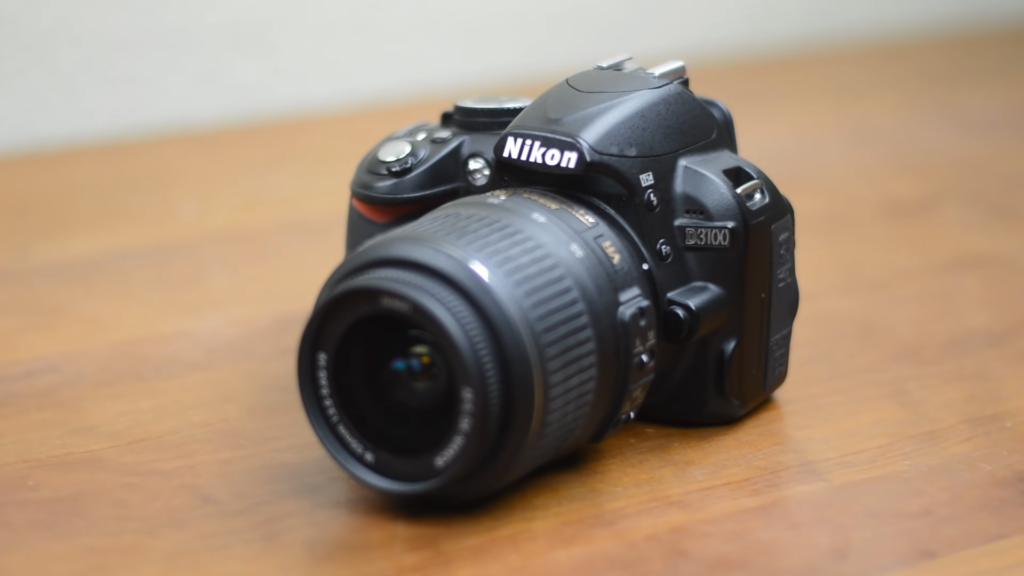
Features
The Nikon D3100 boasts an array of creative functions aimed at enhancing the quality of your shots. Among its features is the Picture Control Technology that enables you to apply artistic filters directly in-camera and access shots from any shooting mode. Additionally, it features Live View mode which allows you to compose your shots directly from the camera’s LCD monitor.
The Nikon D3100 also includes an array of scene modes that are perfect for capturing a variety of subjects and settings. It has six built-in Picture Control profiles with adjustable parameters such as brightness, contrast, and sharpness. It has a dedicated Scene Auto Selector Mode which automatically determines the best settings for any given scene.
Pros
- 14.2 megapixel sensor provides great image quality
- 11 point autofocus system is fast and accurate
- Live View mode allows you to compose shots directly from the LCD monitor
- Scene Auto Selector Mode automatically determines the best settings for any given scene
- Variety of creative filters are available with Picture Control Technology [1]
Cons
- No built-in image stabilization or video recording capabilities
- ISO range is limited to 100 – 3200
- Small buffer capacity can cause slow performance when shooting in bursts
- No built-in Wi-Fi connectivity for transferring images wirelessly
Nikon D3300 Overview
Specifications
The Nikon D3300 is a 24.2 megapixel digital SLR camera with an impressive 3-inch LCD monitor for easy image viewing and editing. It has an 11-point autofocus system, allowing you to quickly and accurately focus on a subject. Additionally, the D3300 has an ISO range of 100-12800, meaning you can capture sharp images even in low light conditions.
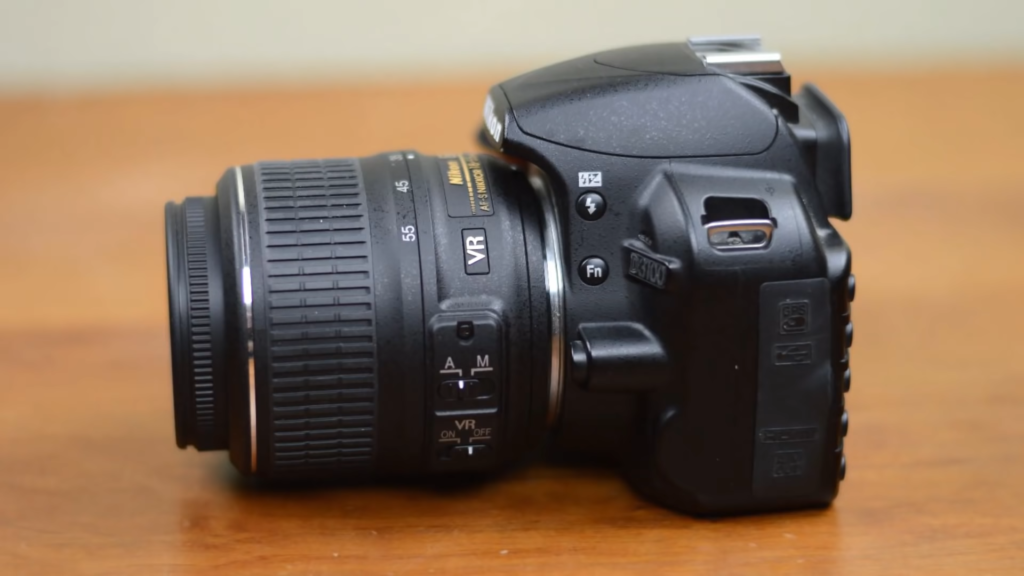
Features
The Nikon D3300 also features a variety of creative functions to help you perfect your shots. It includes Picture Control Technology which allows you to apply creative filters directly within the camera and access shots from any shooting mode. Additionally, it features Live View mode which allows you to compose your shots directly from the camera’s LCD monitor.
The Nikon D3300 also includes an array of scene modes that are perfect for capturing a variety of subjects and settings. It has eight built-in Picture Control profiles with adjustable parameters such as brightness, contrast, and sharpness. It has a dedicated Scene Auto Selector Mode which automatically determines the best settings for any given scene.
The Nikon D3300 also offers video recording capabilities up to 1080p full HD resolution at 60 frames per second. It includes a 3x digital zoom feature and an electronic vibration reduction (VR) mode to help reduce camera shake. Additionally, it has a built-in Wi-Fi connectivity for transferring images wirelessly. [2]
Pros
- 24.2 megapixel sensor provides excellent image quality
- 11 point autofocus system is fast and accurate
- Live View mode allows you to compose shots directly from the LCD monitor
- Scene Auto Selector Mode automatically determines the best settings for any given scene
- Variety of creative filters are available with Picture Control Technology
- 1080p full HD video recording capabilities
- Built-in Wi-Fi connectivity for transferring images wirelessly
Cons
- No built-in image stabilization
- ISO range is limited to 100 – 12800
- Small buffer capacity can cause slow performance when shooting in bursts
- No support for RAW file format capture
Nikon D3100 vs. D3300: A Comparison
When deciding between the Nikon D3100 and the Nikon D3300, it is important to consider the specifications, features, pros, and cons of each camera. While both cameras offer excellent image quality, the D3300 offers increased megapixels and an ISO range of 100-12800, which makes it better suited for capturing images in low light conditions.

The Nikon D3100 has a built-in 11-point autofocus system and comes with Picture Control Technology for creative filters. However, it does not offer video recording capabilities or built-in Wi-Fi connectivity for wirelessly transferring images. The Nikon D3300, on the other hand, has a 24.2 megapixel sensor and includes full HD video recording capabilities up to 1080p at 60 frames per second, as well as built-in Wi-Fi connectivity for transferring images wirelessly. [3]
In conclusion, the Nikon D3300 offers a superior image quality and more features than the D3100. It has higher resolution capabilities, video recording capabilities, and built-in Wi-Fi connectivity making it an ideal choice for photographers wanting to take high-quality images in a variety of light conditions. Additionally, its array of creative functions makes it easy to apply filters and enhance your photos. For these reasons, the Nikon D3300 is the better choice over the D3100.
With its quality image performance, wide range of features, and creative functions, the Nikon D3300 is a great choice for photographers seeking an entry-level digital SLR camera. Whether you are shooting landscapes or portraits, it has the tools to help you capture stunning images.
For those looking for an affordable, yet reliable digital SLR camera, the Nikon D3300 is a great option that offers an impressive array of features and capabilities. With its high-resolution sensor, excellent autofocus system, and variety of scene modes, it is sure to meet all your photography needs. The Nikon D3300 is the perfect camera for anyone looking to take their photography to the next level.
It is important to remember that each photographer has different needs when it comes to equipment, so be sure to carefully consider all options before making a purchase. We hope this comparison of the Nikon D3100 and the Nikon D3300 was helpful in deciding which camera is right for you. [4]
Additional Accessories to Consider
Once you have chosen your digital camera, there are several additional accessories that can be purchased to help enhance its performance. These include external flash units, remote shutter releases, tripods and monopods, and extra batteries or memory cards. If you plan to shoot in low light conditions, a tripod or monopod can be used to keep your camera steady and reduce blurriness in the image. Additionally, an external microphone may be necessary when shooting videos.
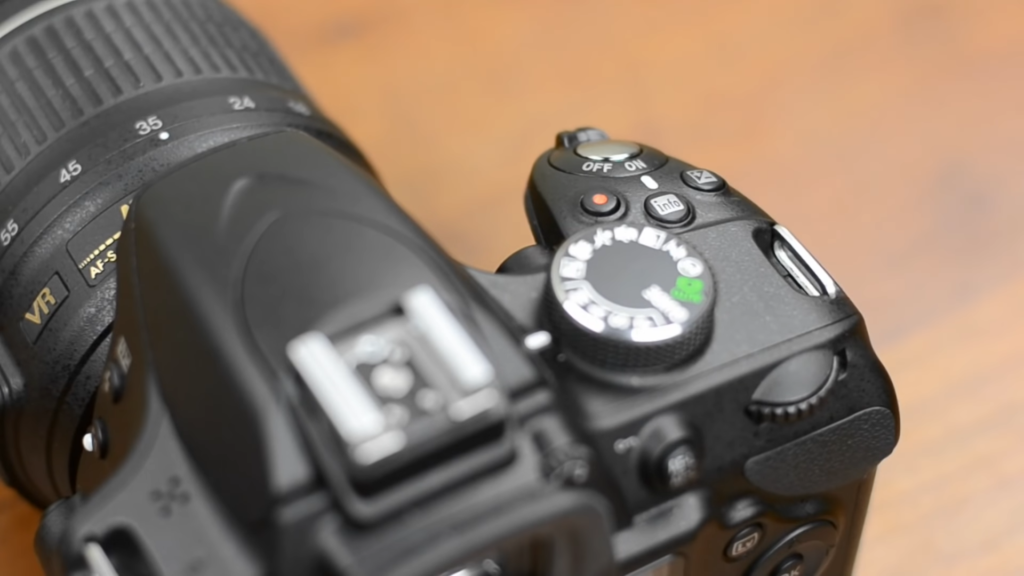
In addition to these accessories, there are also various lens options available for digital cameras. Prime lenses offer excellent image quality and allow you to capture more detailed shots. Zoom lenses, on the other hand, are more versatile and can be used to capture wide-angle shots as well as close-ups.
The right accessories can help you get the best out of your digital camera and make capturing great photos easier. Be sure to consider all available options before making a purchase so that you have everything you need to take stunning pictures.
Audio Features Comparison
In addition to the imaging capabilities, it is important to consider the audio features when deciding between the Nikon D3100 and the Nikon D3300. The D3100 does not have an external microphone jack or support for stereo sound recording. It also lacks built-in image stabilization which can help reduce camera shake and improve video quality.
The Nikon D3300, on the other hand, has a 3.5mm stereo microphone jack which allows for external microphones to be used. It also comes with an electronic vibration reduction (VR) mode to help reduce camera shake and ensure smoother video footage. Additionally, it supports stereo sound recording and includes a wind noise reduction feature which helps eliminate unwanted background noise from recordings.
The Nikon D3300 offers more advanced audio features than the D3100, making it a better choice for those looking to capture high-quality video as well as audio. With its higher resolution sensor and wide range of audio features, the Nikon D3300 is an excellent camera for creating professional-looking videos. [5]
Storage Comparison
When considering the Nikon D3100 and D3300, it is also important to consider the storage capacity of each camera. The Nikon D3100 has a limited buffer capacity which can cause slow performance when shooting in bursts. It also does not support RAW file format capture and only supports JPEG files.
The Nikon D3300, on the other hand, has a large buffer capacity which allows for more continuous shooting and faster performance. It also supports RAW format capture as well as JPEG files. Additionally, it includes an SD memory card slot that is compatible with SDHC and SDXC cards for extended storage options.
The Nikon D3300 offers greater storage capabilities than the D3100, making it ideal for photographers who take a lot of photos in bursts or record videos. With its large buffer, RAW file format capture, and SD card slots, the Nikon D3300 is a great choice for those looking to store their media securely. [6]
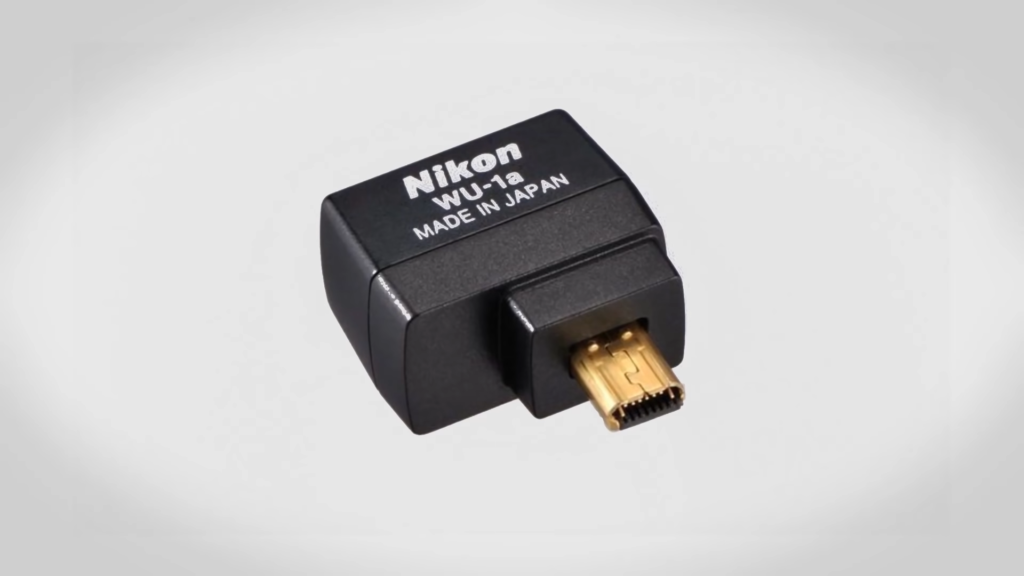
Power Comparison
Also, it is important to consider the power capabilities when comparing the Nikon D3100 and D3300. The D3100 has a battery life of about 500 shots per charge while the D3300 can take up to 700 shots per charge. Additionally, the Nikon D3300 is compatible with EN-EL14a rechargeable batteries which offer additional shooting time.
The Nikon D3300 also offers better power management features than the D3100. It has a dedicated battery info button that allows you to check remaining battery life, and it also includes an auto-off function to help conserve power. For these reasons, the Nikon D3300 is a better choice for those who need extended shooting time and reliable power management.
Connectivity Comparison
When comparing the Nikon D3100 vs. D3300, it’s important to consider their respective connectivity options. The D3100 is equipped with a USB 2.0 port for connection to PCs and an HDMI port for connecting directly to HDTVs and other devices. On the other hand, the D3300 has a USB 3.0 port for faster transfer speeds and support for the optional wireless mobile adapter WU-1a. The D3300 also has a 3.5mm microphone jack for connecting external microphones, allowing users to capture higher quality audio during recording sessions. Both cameras have built-in Wi-Fi capabilities, making it easy to share images wirelessly with compatible devices. Additionally, Nikon’s SnapBridge app enables users to connect their cameras to compatible smartphones via Bluetooth for the ultimate convenience and mobile photography experience. [7]
Ultimately, the D3300 offers more advanced connectivity options than its older sibling – giving it a slight edge over the D3100 in this category.
How to Store and Maintain Your Nikon Camera
Battery Charging and Storage
Proper battery maintenance is a major part of ensuring your Nikon camera has a long life. For the best performance, make sure to fully charge the battery before every use and store it in a cool, dry place away from direct sunlight. When not in use, try to remove the battery from the camera and store it separately for optimal longevity.
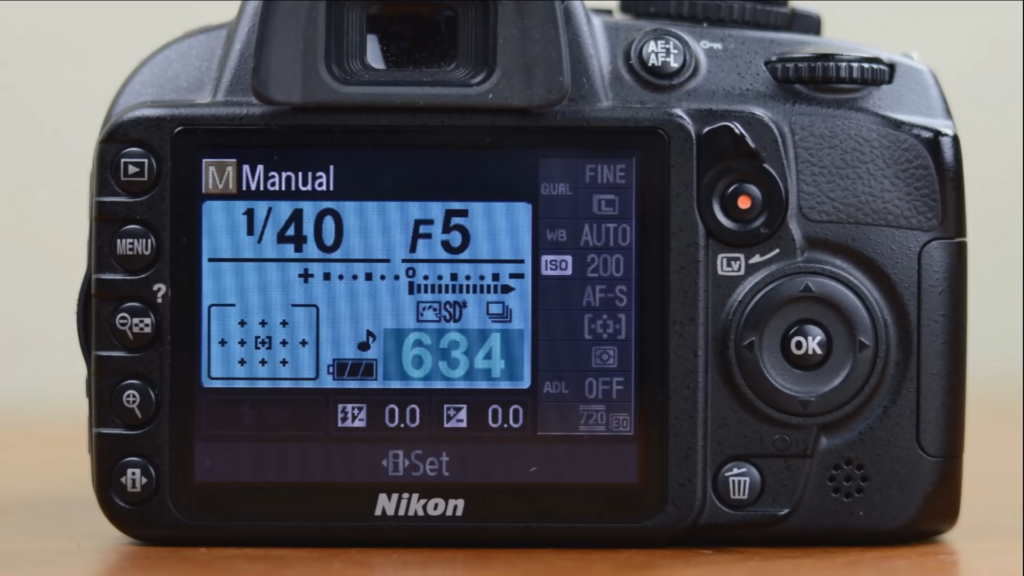
Cleaning Lens Filters and Bodies
To keep your camera and lenses looking new, it’s important to clean them regularly. To avoid any damage to the camera or lens filters, use a soft cloth and gentle cleaning solutions specifically designed for use on cameras. Avoid using chemical-based cleaners as they can cause permanent damage. After cleaning, be sure to wait until the filter is completely dry before putting it back on the lens. [8]
Camera Bags and Cases
To protect your Nikon camera from damage, invest in a good-quality camera bag or case for transport. Look for cases that are designed with special padding to prevent damage from bumps and drops. They should also have plenty of compartments to store other important accessories such as memory cards and lenses.
Backup Your Photos
Accidents happen, and to protect your photos from being lost forever, it’s important to back them up regularly. You can do this by transferring the images directly onto an external hard drive or cloud storage service. This will ensure that you never lose any valuable memories due to a hardware failure or other issue.
Regular Maintenance
Regular maintenance can help keep your Nikon camera running smoothly for years to come. If you’re not comfortable performing these tasks yourself, take it to a professional service center for occasional check-ups and tune-ups. This will ensure that any problems are spotted early on before they become more significant issues.
Alternatives to the Nikon D3100 and D3300
Canon EOS Rebel T6i
The Canon EOS Rebel T6i is a great option for those looking for a camera with a few more features than the Nikon D3100 and D3300. It has an APS-C CMOS sensor, 24.2 megapixel resolution, an ISO range of 100-12800, and 5 frames per second burst shooting speed. It also offers wireless connectivity and a wide range of creative options.

Sony Alpha A6000
The Sony Alpha A6000 is another great option for those seeking an upgrade from the Nikon D3100 and D3300. It has a 24.3 megapixel APS-C Exmor CMOS sensor, 11 frames per second burst shooting speed, ISO range of 100-25600, and built-in WiFi and NFC connectivity. It also offers advanced creative options such as picture effects and auto HDR mode.
Fujifilm X-T20
The Fujifilm X-T20 is a great option for those wanting to take their photography skills up a notch without spending too much money. It has an APS-C X-Trans CMOS III sensor, 24.3 megapixel resolution, ISO range of 200-12800, and 8 frames per second burst shooting speed. It also offers a wide range of creative features such as film simulation modes and advanced auto focus options. [9]
Olympus OM-D E-M10 Mark III
The Olympus OM-D E-M10 Mark III is a great option for those wanting something more compact, yet packed with features. It has a 16 megapixel Live MOS sensor, 8 frames per second burst shooting speed, ISO range of 200-25600, and built-in WiFi and Bluetooth connectivity. It also offers creative options such as in-camera panorama mode and electronic image stabilization.
Pentax K-70
What Types Of Photography Are Nikon D3100 and Nikon D3300 Good for?
The Nikon D3100 and D3300 are great cameras for both novice and experienced photographers. They offer a range of features that make them well-suited to different types of photography, such as:
- Landscape Photography: With their high-resolution sensors and wide ISO ranges, the Nikon D3100 and D3300 can capture stunning landscapes with great detail and dynamic range.
- Portrait Photography: With their fast autofocus speeds and wide selection of lenses, the Nikon D3100 and D3300 are great for portrait photography. They offer excellent image quality even in low light conditions, making them ideal for indoor shoots.
- Sports Photography: The Nikon D3100 and D3300 offer fast burst shooting speeds and advanced auto focus, making them great for capturing action-packed shots of sporting events. They can also be used to take stunning close-up photos of athletes in motion.
- Wildlife Photography: With their long battery life and high ISO ranges, the Nikon D3100 and D3300 are excellent choices for wildlife photography. Their zoom lenses and fast autofocus speeds make them well-suited to capturing photos of wild animals in their natural habitats.

Tips for Choosing the Right Nikon Camera
When choosing a Nikon camera, there are a few things you should consider:
- Budget: Think about how much money you’re willing to spend on a camera. Nikon cameras range from entry-level models to professional-grade ones, so there’s something for every budget.
- Sensor Size: The larger the sensor size, the more light it can capture, resulting in better image quality. If you’re serious about photography, opt for a full-frame sensor such as those found in the Nikon D750 or the Nikon D850.
- Lenses: Different cameras require different lenses, so it’s important to make sure you buy a camera that is compatible with your desired lenses.
- Features: Think about what features are most important to you and make sure the camera you choose has them. For example, if you plan on shooting video, then look for a camera that has 4K video capabilities.
By taking all of these factors into consideration, you can make an informed decision and choose the best Nikon camera for your needs. With the right knowledge and research, you can find a great camera without breaking the bank.
FAQ
What are the key differences between the Nikon D3100 and D3300?
The Nikon D3100 and D3300 are both mid-range DSLRs that offer great performance for a reasonable price. The main difference between the two is that the D3100 has a 14.2 megapixel sensor while the D3300 has a 24.2 megapixel sensor, which allows it to capture more detail in each image. Additionally, the D3300 has better autofocus, more advanced features and a larger LCD screen than the D3100.
How do the images compare between the two cameras?
The Nikon D3300 offers significantly better image quality than the Nikon D3100 due to its higher megapixel count. This means that when shooting in lower light conditions, you will be able to capture more detail in your images with the D3300. The D3100 is still a great camera for general use, but if you’re looking for higher quality images, you should opt for the D3300.
Which camera is better suited for video recording?
The Nikon D3300 offers superior video recording capabilities compared to the D3100. It can record full HD 1080p video at 30 frames per second, while the D3100 only offers 720p recording at 24 frames per second. Additionally, the D3300 offers better autofocus and image stabilization for smoother video recording.
Which camera provides better battery life?
The Nikon D3100 has a higher battery life than the D3300, offering up to 1,200 shots on a single charge. The D3300 offers up to 700 shots on a single charge, which is still plenty for most uses. However, if you plan on taking a lot of photos or recording long videos, the D3100’s higher battery life will be more beneficial.
What lenses can be used with each camera?
Both the Nikon D3100 and D3300 have a standard F-mount, so you can use any lens with an F-mount to work with either camera. However, the D3300 has a slightly larger sensor size, so if you want to get the most out of your lenses, it’s best to use them with the D3300.
What type of image processor does each camera use?
The Nikon D3100 uses an Expeed 2 image processor, while the Nikon D3300 uses an Expeed 4 image processor. This means that the D3300 is able to process data faster and more efficiently than the D3100, resulting in higher-quality images. Additionally, the D3300 has a better noise reduction system for improved low-light image quality.
What is the difference in price between the two cameras?
The Nikon D3100 is currently available for around $350, while the Nikon D3300 can be found for around $450. This makes the D3100 a great option for those on a budget, while the D3300 offers more features and better image quality for the extra money.
Are there any additional accessories available for the two cameras?
Yes, both the Nikon D3100 and D3300 have a wide range of compatible accessories. Common items include flash units, extra lenses, tripods, remote triggers and camera bags. Additionally, some third-party companies offer compatible grips and other items to help you customize your camera.
Is the Nikon D3100 or D3300 a better choice for beginner photographers?
The Nikon D3100 is a great choice for beginner photographers, as it offers plenty of features and performance at an affordable price. The camera has an intuitive UI that makes it easy to learn the basics of photography, and its 14 megapixel sensor is more than enough for most beginner uses. The Nikon D3300 is also a great camera, but its higher price and more advanced features may be intimidating to some beginners.
Does the Nikon D3100 or D3300 have any built-in Wi-Fi capabilities?
No, neither of these cameras have built-in Wi-Fi capabilities. However, you can purchase an optional Wi-Fi adapter for the D3100 and use it to connect your camera to your smartphone or tablet. This will allow you to transfer images wirelessly from your camera to your device. The D3300 does not have this capability, so you would need to invest in a separate Wi-Fi adapter if you want that functionality.
Are there any third-party apps available for the Nikon D3100 or D3300?
Yes, there are several third-party apps available for both the Nikon D3100 and D3300. These can be used to add additional features and capabilities to your camera, such as remote shooting, interval timer, motion control and HDR modes. Additionally, some third-party apps offer more advanced features such as timelapse, focus stacking and time-lapse videos.
Can I use the Nikon D3100 or D3300 with an external flash unit?
Yes, you can use both the Nikon D3100 and D3300 with an external flash unit. However, the D3100 is limited to using Nikon’s own i-TTL flash units, while the D3300 is compatible with a wider range of third-party flash units. If you are looking to get more out of your camera and invest in additional accessories like a flash unit, it may be worth considering upgrading to the D3300 for its extra compatibility.
Is the Nikon D3100 lighter than the D3300?
Yes, the Nikon D3100 is lighter than the D3300. The D3100 weighs in at 14.8 ounces (420 grams), while the D3300 weighs 16.9 ounces (480 grams). This makes it easier to carry and use when on long shoots or when you are traveling. Additionally, the D3100 has a smaller body size, making it easier to fit into a bag or pocket. However, the D3300 has higher resolution sensors and better autofocus performance, so you will need to decide which features are more important for your needs.
Which model has a longer battery life?
The Nikon D3100 has a battery life of 550 shots, while the D3300 has a battery life of 700 shots. This means that the D3300 can take almost 30% more photos than the D3100 before needing to recharge its battery. While this difference might not seem like much, it could be important if you are doing a lot of photography and don’t want to worry about running out of power.
Useful Video: Nikon D3100 vs Nikon D3300
Conclusion
Overall, the Nikon D3100 and the D3300 are two great cameras with different strengths and weaknesses. The D3100 is lighter and smaller, making it a great choice if you need something portable or easy to take on long shoots. However, the D3300 has higher resolution sensors and better autofocus performance, so you will need to decide which features are more important for your needs. Additionally, the D3300 has a longer battery life and can take almost 30% more photos than the D3100 before needing to recharge. Regardless of which one you choose, you will likely be satisfied with either camera.
References
- https://versus.com/en/nikon-d3100-vs-nikon-d3300
- https://www.apotelyt.com/compare-camera/nikon-d3100-vs-nikon-d3300
- https://cameraanalyzer.com/nikon-d3100-vs-nikon-d3300/
- https://pxlmag.com/db/camera-compare/Nikon-D3100-vs-Nikon-D3300
- https://www.techradar.com/how-to/photography-video-capture/cameras/nikon-d3300-vs-d3200-vs-d3100-which-camera-should-you-choose-1320797
- https://camspex.com/comparison.php?camera1=Nikon+D3300&camera2=Nikon+D3100
- https://mecam.me/nikon-d3100-vs-d3300-which-entry-level-dslr-is-better/
- https://www.reddit.com/r/Nikon/comments/4b4we3/d3300_v_d3100_which_one_to_chose/
- https://www.base2photo.com/Photography/Comparisons/Cameras/Quick?camera1=Nikon_D3100&camera2=Nikon_D3300












Leave a Reply